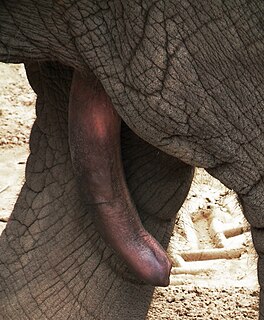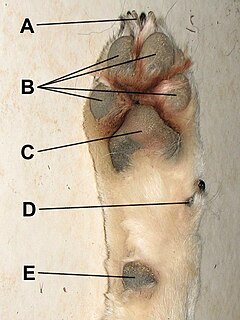 W
WThe anatomy of the domestic cat is similar to that of other members of the genus Felis.
 W
WA penis is the primary sexual organ that male animals use to inseminate females during copulation. Such organs occur in many animals, both vertebrate and invertebrate, but males do not bear a penis in every animal species, and in those species in which the male does bear a so-called penis, the penises in the various species are not necessarily homologous.
 W
WA penis is the primary sexual organ that male animals use to inseminate females during copulation. Such organs occur in many animals, both vertebrate and invertebrate, but males do not bear a penis in every animal species, and in those species in which the male does bear a so-called penis, the penises in the various species are not necessarily homologous.
 W
WThe cheetah is a large cat native to Africa and central Iran. It is the fastest land animal, capable of running at 80 to 128 km/h, and as such has several adaptations for speed, including a light build, long thin legs and a long tail. Cheetahs typically reach 67–94 cm (26–37 in) at the shoulder, and the head-and-body length is between 1.1 and 1.5 m. Adults typically weigh between 20 and 65 kg. Its head is small, rounded, and has a short snout and black tear-like facial streaks. The coat is typically tawny to creamy white or pale buff and is mostly covered with evenly spaced, solid black spots. Four subspecies are recognised.
 W
WA dewclaw is a digit – vestigial in some animals – on the foot of many mammals, birds, and reptiles. It commonly grows higher on the leg than the rest of the foot, such that in digitigrade or unguligrade species it does not make contact with the ground when the animal is standing. The name refers to the dewclaw's alleged tendency to brush dew away from the grass. On dogs and cats the dewclaws are on the inside of the front legs, positioned analogously to a human thumb. Although many animals have dewclaws, other similar species do not, such as horses, giraffes and the African wild dog.
 W
WMany mammalian species have developed keratinized penile spines along the glans and/or shaft, which may be involved in sexual selection. These spines have been described as being simple, single-pointed structures (macaques) or complex with two or three points per spine (strepsirrhines). Penile spine morphology may be related to mating system.
 W
WThe rhinarium is the furless skin surface surrounding the external openings of the nostrils in many mammals. Commonly it is referred to as the tip of the snout, and breeders of cats and dogs sometimes use the term nose leather. Informally, it may be called a "truffle", "wet snout" or "wet nose," because its surface is moist in some species: for example, healthy dogs and cats.
 W
WIn traditional Chinese medicine, a tiger penis is said to have important therapeutic properties. However, there is no scientific proof that tiger penis can be used to treat any medical disorder. Furthermore, the demand for tiger parts exacerbates the endangered status of the tiger by providing a market for poachers. While tiger penis is consumed in parts of China and Southeast Asia, the consumption of tiger penis is often condemned by most countries and various environmental groups.
 W
WA tiger tail is part of the morphology of a tiger.